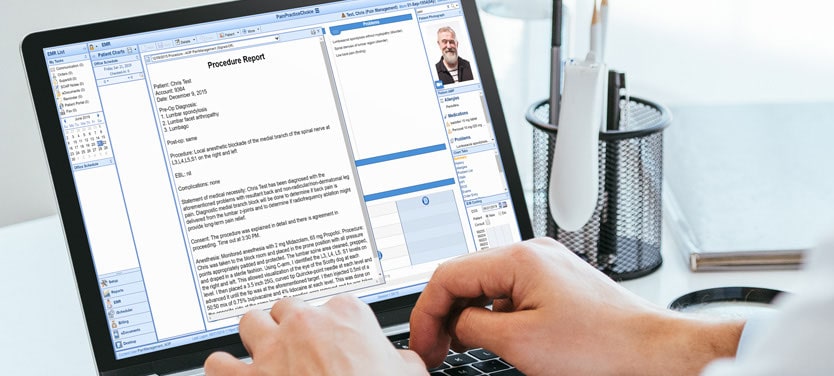
4 Ways a Specialty-Specific Pain Management EHR Boosts Care
Specialists need a specialty-specific pain management EHR. Without the tailored tools y...
Updated technology is essential for the success of any practice. The software your pain management practice is using can determine how involved your patients are able to be or how simple it is to gather and view PHI. The right pain management technology will help your practice accomplish efficiency goals without compromising the integrity and security of data while making your job simpler. Is your pain management technology performing properly for your practice?
6 Features of Quality Pain Management Technology:
1) Fully Integrated Technology
So many processes within your practice work seamlessly with one another, so why are some pain management technology still separating the different components, entirely? Fully integrated pain management technology means that your Electronic Health Record, billing software and practice management software work together to improve efficiency in your workflow, access to data, and the uniformity of information across your resources. Fully integrated software enables providers to file a claim, document a chart, and schedule an appointment, all in one place.
2) Integrated Labs
Integrated labs are an essential component of any pain management technology as a pain management specialist depends on that data to inform and support their clinical decisions. Patient labs that are easily accessible and tracked visually make this process simpler, saving providers time without sacrificing the quality of their decision.
3) ePrescription Capabilities
Your pain management technology should always have the ability to prescribe electronically. This means that prescriptions are sent directly to the pharmacy. This keeps the patient safe while offering them the most convenient options for where to pick up their prescriptions. Geo-based pharmacy recommendations help determine the best pharmacy to send prescriptions based on the patient’s location. Your pain management technology should also suggest the most used prescriptions by other pain management specialists all over the country for each diagnosis.
4) Custom Templates
Customizable documenting templates help providers document more accurately and efficiently while giving them the flexibility they need in their workflow. Specialists know that every patient and every visit is different, and without the flexibility to customize your documenting process, the accuracy of the chart can be compromised. Your technology should offer these customizable options as well as others like the custom color-coded dashboards.
5) Digital Intake
Digital intake has changed how providers collect patient health data. Patients can complete their intake forms digitally from the comfort of their home, decreasing wait times and improving the accuracy of their chart. This feature of quality pain management technology also enables providers to collect electronic signatures and consent forms prior to the patient entering the office so all of that is ready to go in their file at the time of service.
6) Accessible Mobile App
Lastly, and accessible mobile app is a must-have feature in any pain management technology used by on-the-go specialists. Mobile EHRs enables providers to communicate with patients, access their chart, view results, and more from a secure mobile device. This enables your team to accomplish more in their day rather than be trapped at their desk behind a computer. Dictation tools help physicians document accurately without slowing them down. In 2023, every pain management specialist needs an accessible mobile app to help them optimize efficiency at their practice.
To learn more about pain management technology that will perform properly for your practice, click here.